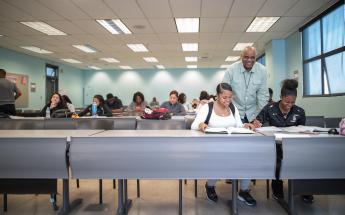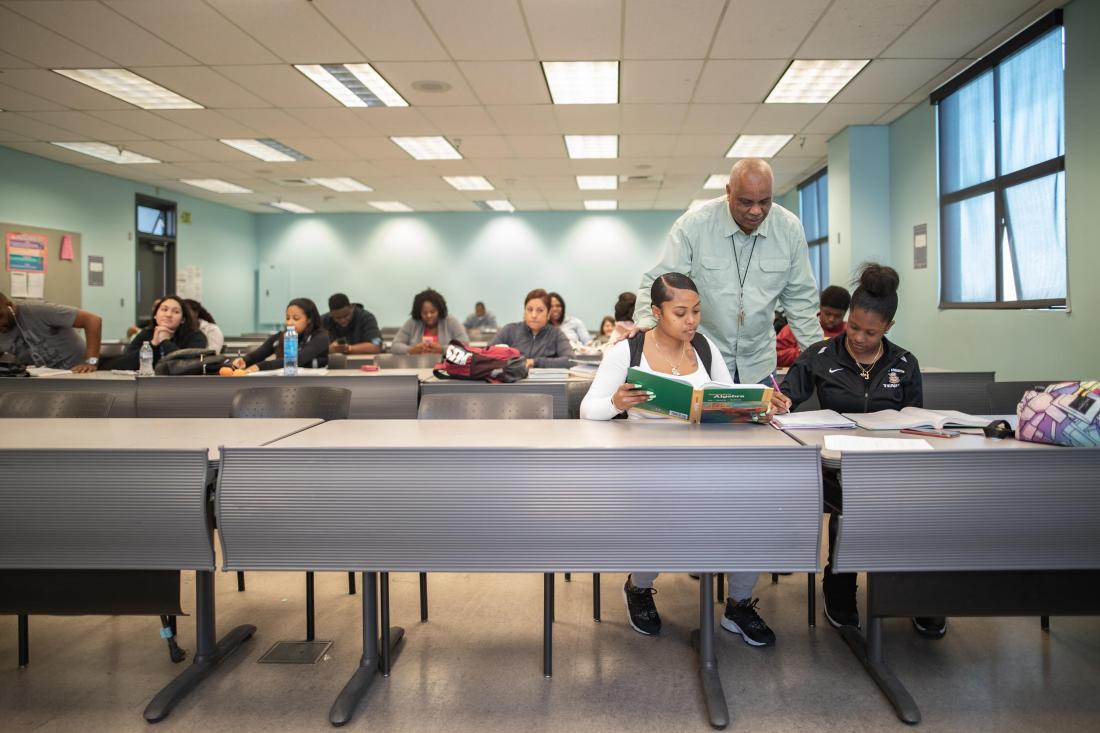Mathematics (AST)
Careers in Mathematics
Those with a background in mathematics use their natural aptitude for logic and precision in finance careers, data analysis, engineering, and more. These careers are in high demand, and are as challenging as they are rewarding!
Here are some professions and their salaries you could have with a transfer degree in Mathematics:
Career information below taken from bls.gov December 2019. Go to bls.gov for most current career information.
Prepare and examine financial records.
Data for Los Angeles/Long Beach/Anaheim
| Typical Education Level: | Salary: | Hourly Median Wage: |
| Bachelor’s Degree | $84,650/year | $40.70/hour |
| Work Experience in a Related Occupation: | Job Outlook 2018-2028: | Number of Jobs 2018: |
| None needed | 7% increase (faster than average) | 61,520 |
Use mathematics, statistics, and financial theory to analyze the financial costs of risk and uncertainty.
Data for Los Angeles/Long Beach/Anaheim
| Typical Education Level: | Salary: | Hourly Median Wage: |
| Bachelor’s Degree | $113,770/year | $54.70/hour |
| Work Experience in a Related Occupation: | Job Outlook 2018-2028: | Number of Jobs 2018: |
| Long-term on-the-job training | 4% increase (as fast as average) | 740 |
Formulate and apply mathematical modeling and other optimizing methods to develop and interpret information that assists management with decision making, policy formulation, or other managerial functions. May collect and analyze data and develop decision support software, service, or products. May develop and supply optimal time, cost, or logistics networks for program evaluation, review, or implementation.
Data for Los Angeles/Long Beach/Anaheim
| Typical Education Level: | Salary: | Hourly Median Wage: |
| Bachelor’s Degree | $92, 030/year |
$44.24/hour |
| Work Experience in a Related Occupation: | Job Outlook 2018-2028: | Number of Jobs 2018: |
| None needed |
4% increase (as fast as average) |
3,850 |
Teach academic math lessons and various skills that students will need to attend college and to enter the job market.
Data for High School Teachers in all subjects for Los Angeles/Long Beach/Anaheim
| Typical Education Level: | Salary: | Hourly Median Wage: |
| Bachelor’s Degree | $80,330/year | $38.62/hour |
| Work Experience in a Related Occupation: | Job Outlook 2018-2028: | Number of Jobs 2018: |
| None needed |
5% increase (as fast as average) |
41,490 |
Analyze data and apply mathematical and statistical techniques to help solve problems.
Data for Los Angeles/Long Beach/Anaheim
| Typical Education Level: | Salary: | Hourly Median Wage: |
| Master's Degree | $94,270/year | $45.32/hour |
| Work Experience in a Related Occupation: | Job Outlook 2018-2028: | Number of Jobs 2018: |
| None needed | 4% increase (as fast as average) | 90 |
What You’ll Learn at LASC in Mathematics
You can get Associate in Science for Transfer (AST) and Associate in Arts (AA) degrees through LASC’s Mathematics program where you will exercise and expand your talent for problem-solving:
- Develop the ability to not only solve complex mathematical problems, but also be able to explain the process and results simply and in sentence form so you can share your knowledge with others.
- Understand the logical methods applied to mathematics, and apply those to organizational and systematic issues.
- LASC provides internships so you can build your career connections and create community ties for after you graduate.
- To transfer with an Associate in Science for Transfer (AST) degree in Mathematics from LASC to get your bachelor’s degree, you will have guaranteed admission into a CSU! Plus, you’ll be able to save money on your first two years of college in smaller class sizes learning from caring, engaging faculty whose only focus is seeing your success! See your academic counselor for more information.
Degrees & Courses You Will Take
Review LASC’s Associate in Science for Transfer (AST) and Associate in Arts (AA) degrees in Mathematics below, along with our suggested course of study for these programs. Go to LASC’s current Course Catalog for specific course information:
Major Code: 1701.00
Total Units Required: 0
If you are planning to transfer to a CSU or UC, then an Associate in Science in Mathematics is for you! You can complete an Associate in Science for Transfer Degree (AST) in Mathematics if you planning to transfer to a CSU Mathematics bachelor’s program. By successfully completing this degree, you are guaranteed admission to a CSU upon completion of this program!
The Associate in Science in Mathematics for Transfer Degree requirements include:
- completion of 60 CSU transferable units, including the minimum 18 units in the major and the completion of either IGETC or CSU GE;
- a minimum GPA of 2.0.
If you are interested in completing an Associate Degree for Transfer, you must:
Complete 60 semester units of 90-quarter units that are eligible for transfer to the California State University, including both of the following: *
- The Intersegmental General Education Transfer curriculum (IGETC) or the California State University General Education-Breadth Requirements:
- A minimum of 18 semester units or 27 quarter units in a major or area of emphasis, as determined by the community college district.
*As required by Senate Bill 1440 & California Education Code section 66746
ADTs also require that you must earn a C or better in all courses required for the major area of emphasis. A “P” (Pass) grade is not an acceptable grade for courses in the major.
You should meet with a counselor to determine the necessary course work to complete the general education requirements.
| Required Courses: | Units |
|---|---|
| MATH 227 Statistics | 4 |
| MATH 265 Calculus with Analytic Geometry I | 5 |
| MATH 266 Calculus with Analytic Geometry II | 5 |
| MATH 267 Calculus with Analytic Geometry III | 5 |
| MATH 270 Linear Algebra | 3 |
| MATH 275 Ordinary Differential Equations | 3 |
| TOTAL UNITS | 21-22 |
Upon completion of this program, you will be able to:
- Solve word problems by following the problem-solving strategy method. Declare variable(s), set up equation(s), solve equation(s), and express answer as a sentence/phrase in English (with at least 70% success rate).
- Solve systems of linear equations by graphing, and algebraic methods (with at least 65% success rate).
- Graph a linear, quadratic, polynomial, rational, exponential, log, and trigonometric functions (with at least 65% success rate).
- Evaluate the first and second derivatives of a given function (with at least 65% success rate).
- Determine whether a pair of functions are linearly independent or dependent on the real numbers (with at least 65% success rate).
Required Courses: Units MATH 265 Calculus with Analytic Geometry I 5 MATH 266 Calculus with Analytic Geometry II 5 MATH 267 Calculus with Analytic Geometry III 5 MATH 275 Ordinary Differential Equations 3 Recommended Electives CHEM 101 General Chemistry I 5 CHEM 102 General Chemistry II 5 CO SCI 608 Beginning BASIC Programming 3 MAT 270 Linear Algebra 3 PHYSICS 37 Physics for Engineers and Scientists I 5 PHYSICS 38 Physics for Engineers and Scientists II 5 PHYSICS 39 Physics for Engineers and Scientists III 5 TOTAL UNITS 18
Get Ready Before You Start
Interested in a career in mathematics? Before your first class at LASC, you can start preparing for your mathematics career
- Make an appointment with your LASC academic counselor to review LASC’s program, start to develop a Student Education Plan (SEP), and discuss your career goals to see what opportunities and support services, such as Math Lab, peer tutoring, and student service programs would be beneficial for your future plans.
- Still in high school? Take as many math and science classes as you can and complete them so you understand them well. If you need it, find tutoring to get tips and pointers in order to succeed.
- Once you’re at LASC, make sure to get involved with on-campus clubs and organizations, such as TRIO STEM and Phi Theta Kappa, become a student ambassador, or run for student body government. These create new relationships and show potential employers your commitment to building teamwork, communication, and leadership skills.
Program Learning Outcomes

As a student, upon successfully completing this program, you will be able to:
- Solve word problems by following the problem-solving strategy method. Declare variable(s), set up equation(s), solve equation(s), and express answer as a sentence/phrase in English (with at least 70% success rate).
- Solve systems of linear equations by graphing, and algebraic methods (with at least 65% success rate).
- Graph a linear, quadratic, polynomial, rational, exponential, log, and trigonometric functions (with at least 65% success rate).
- Evaluate the first and second derivatives of a given function (with at least 65% success rate).
- Determine whether a pair of functions are linearly independent or dependent on the real numbers (with at least 65% success rate).
